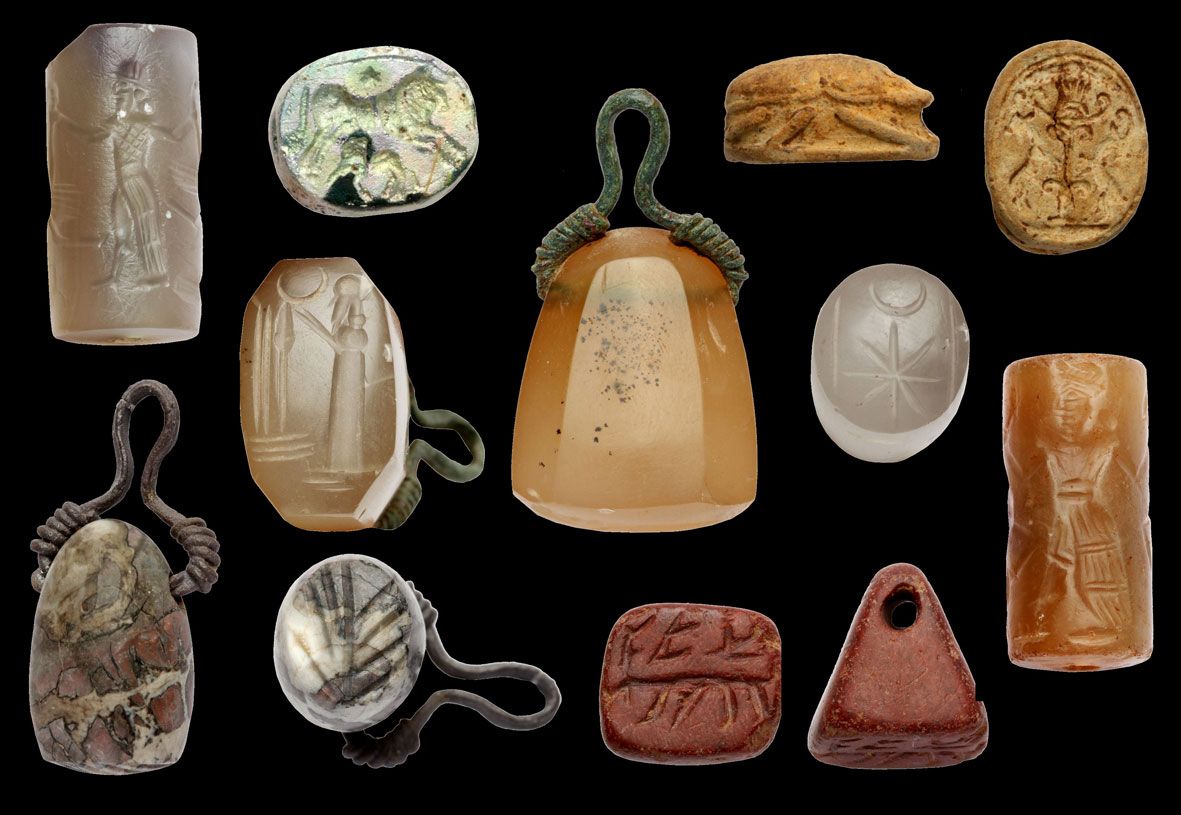Trove of Religious Offerings Unearthed from Ancient Sanctuary in Turkey

Archaeologists digging in southern Turkey say they've discovered more than 600 stamp seals, cylinder seals and amulets left as religious offerings in an ancient sanctuary.
Carved with images of animals, people, deities and geometric figures, the small artifacts date from the seventh to fourth centuries B.C. and were found near the site of the ancient city of Doliche, which has a long history of worship. Researchers think the place was revered as early as the Iron Age (around the beginning of the first millennium B.C.). It later became a famous sacred site of the Roman era, dedicated to Jupiter Dolichenus, the god of storms and weather, and then it was used as a Christian monastery.
People used stamp seals and cylinder seals to impress images into wet clay. These objects were sometimes used as a way to authenticate documents (in this case, tablets), but they also seem to have been used as religious offerings. [Images: Ancient Carving of Roman God]
"The amazingly large number proves how important seals and amulets were for the worshipping of the god to whom they were consecrated as votive offerings," excavation director Engelbert Winter, a professor at the University of Münster in Germany, said in a statement. "Such large amounts of seal consecrations are unheard-of in any comparable sanctuary."
So far, the objects found at Doliche have been identified as belonging to the late Babylonian, Syrian Achaemenid and Levantine cultures. The seals are made of glass, stone and quartz ceramics, and they feature a wide range of images, from men fighting animals to men praying in front of divine symbols.
"Even those images that do not depict a deity express strong personal piety: With their seals, people consecrated an object to their god which was closely associated with their own identity," archaeologist Michael Blömer, also a professor at the University of Münster, said in a statement.
Winter said the seals and amulets could fill gaps in knowledge about history of worship at the site, especially during the first millennium B.C., before Doliche's status as a Roman sacred site was cemented.
Sign up for the Live Science daily newsletter now
Get the world’s most fascinating discoveries delivered straight to your inbox.
Winter and Blömer conducted excavations this year during a two-month period. The site is being preserved and protected so that it can double as an archaeological park that will be accessible to visitors, the researchers say.
Follow Megan Gannon on Twitter and Google+. Follow us @livescience, Facebook & Google+. Original article on LiveScience.











